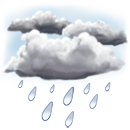
INET and 367th RCS partner for Navajo school visits

Courtesy | U.S. Air Force Staff Sgt. Colin Hollowell
From left to right: Air Force Master Sgt. Shannon Myhre, a 150th Special Operations Wing New Mexico Department of Military Affairs tribal liaison officer; Air Force Tech Sgt. Anastacia Rodriguez, a 6th Maintenance Squadron aerospace propulsion technician; Air Force Tech Sgt. Darrell Charlee, a Kirtland Air Force Base Inspection Agency client systems NCO in charge; and Air Force Tech Sgt. Anika Dexter, a 319th Training Squadron military training instructor trainer. The group posed for a photo while wearing traditional outfits near Tsé Bit’ą’í on Feb. 28, 2024. The four Diné Airmen all grew up on or near Diné Bikéyah. They’re members of the U.S. Air Force’s Indigenous Nations Equality Team.
By U.S. Air Force Staff Sgt. Colin Hollowell
HQ Air Force Recruiting Service
FARMINGTON – Four Department of the Air Force Indigenous Nations Equality Team members partnered with a local enlisted accessions recruiter assigned to the 367th Recruiting Squadron to increase awareness for U.S. Air Force, Air National Guard, and the Air Force Reserve opportunities while touring five schools on the Navajo Nation from Feb. 26 – March 1, 2024.
INET is a Department of the Air Force Barrier Analysis Working Group that advocates on behalf of Native American Airmen.

Courtesy | U.S. Air Force Staff Sgt. Colin Hollowell
Air Force Tech Sgt. Anika Dexter, a 319th Training Squadron military training instructor trainer, left, Air Force Tech Sgt. Anastacia Rodriguez, a 6th Maintenance Squadron aerospace propulsion technician, right, and Air Force Master Sgt. Shannon Myhre, a 150th Special Operations Wing New Mexico Department of Military Affairs tribal liaison officer, brief Shiprock High School faculty members on the U.S. Air Force Indigenous Nations Equality Team in Shiprock on Feb. 27, 2024. Dexter, Rodrigues, and Myhre discussed Air Force enlistment opportunities and INET’s mission while sharing their experiences as Native American Airmen.
“INET is the USAF’s total force cultural advocate for indigenous people that strives to remove conscious and unconscious barriers,” said Air Force Tech. Sgt. Darrell Charlee, a Kirtland Air Force Base Inspection Agency client systems NCO in charge. “We want to provide education across the force about Native American culture and raise awareness of unconscious appropriation.”
Charlee is Táchii’nii and born for Dziłtł’ahnii. His maternal grandfather is Kinyaa’áanii and his paternal grandfather is Bit’ahnii. He’s originally from Gallup.
One example Charlee described is the “End of Trail” sculpture, gifted to those who reached the highest enlisted rank of chief master sergeant. He explained that the décor’s origin represents the suffering of Indigenous people after being driven from their native lands.
“I can’t blame people for not knowing, but that’s why INET is striving to increase awareness and understanding. We want to help foster a more inclusive environment,” he continued.
INET’s current priorities seek to affect change for gender-neutral hairstyles for Native American males, on and off-duty ceremonial accommodations, and to address barriers that hinder Indigenous retention.
Charlee said there are 574 recognized Native American tribes in the U.S., more than twice the number of countries worldwide.
“Roughly 18%, nearly one-in-five Native Americans either have or are currently serving in the military,” Charlee said. “It goes back to that warrior ethos. Native men and women have an almost instinctual obligation to serve their country and people.”
As Charlee highlights, Native Americans have historically had a high willingness to serve, and recent shifts in societal awareness have increased public understanding and Indigenous pride across the nation.
“When I was growing up, we were encouraged to leave the reservation,” he said. “There’s been a recent resurgence of cultural pride that’s partially responsible for driving people to return.
“People are now being encouraged to go out and learn trades and skillsets that they can bring back to help the reservation. The Air Force has offered that opportunity to many indigenous Airmen,” Charlee continued.
With over 17 million acres of land spanning three states, the Navajo Nation is the largest Native American reservation home to over 170,000 residents.
“Having Charlee, a Navajo native, and the other INET Airmen present while visiting these schools was tremendously helpful,” said Tech. Sgt. Dylan Tomczyk, the 367th RCS enlisted accessions recruiter. “The USAF is heavily underrepresented in these communities, with a large percentage of Navajo veterans having served in the U.S. Army and U.S. Marine Corps.
“INET’s support and advocacy helps bring awareness to the USAF as another option of service,” he continued.
Increased Indigenous representation throughout the ranks can positively impact other Native Americans currently serving.
Tech Sgt. Anastacia Rodriguez, a 6th Maintenance Squadron aerospace propulsion technician, recalls how meaningful it was to meet a fellow Native American woman serving in the Air Force: “I was at a crossroads in my career,” she said.
“If you could look at a timeline of my career, meeting Col. Maureen Trujillo was the moment where everything changed for me,” Rodriguez said. “In our culture, we strongly value the wisdom and experience of our elders, so meeting her and seeing everything she’s accomplished helped me see my own potential.”
While INET strives to grow as the USAF’s champion for Native American advocacy, other groups at various levels aim to achieve similar goals. America’s Air and Space Force remains a diverse collective of the nation’s best and brightest.
“It’s imperative for us as recruiters to be actively involved in different communities,” Tomczyk said. “The Air Force is a diverse team, and we can’t be successful without the collective contributions of every Airman from every walk of life. Diversity is our nation’s greatest weapon, something our adversaries simply cannot compete with.”








 Highway 264,
Highway 264, I-40, WB @ Winslow
I-40, WB @ Winslow